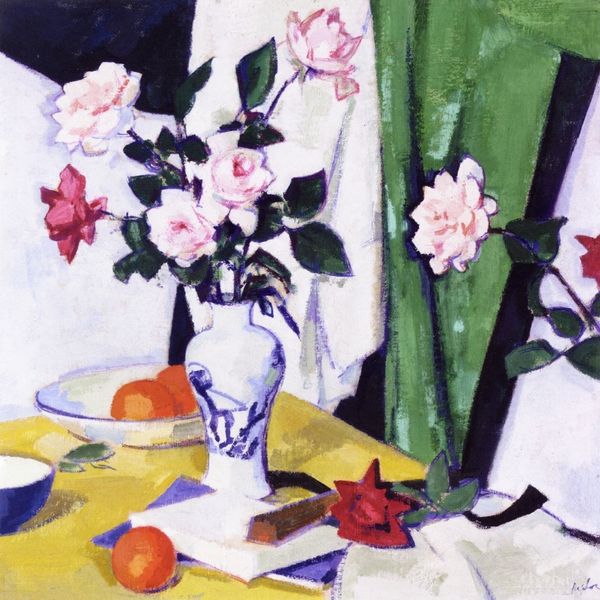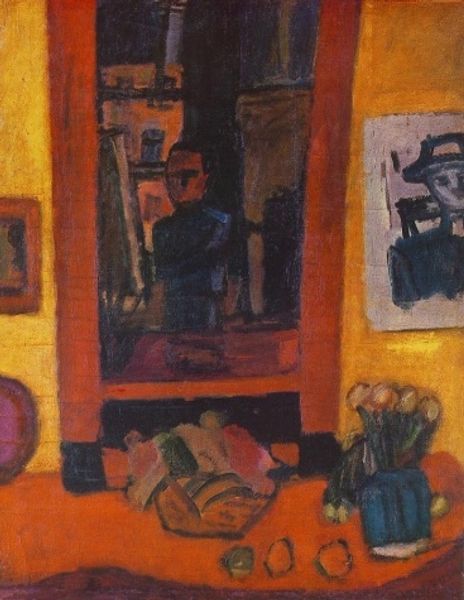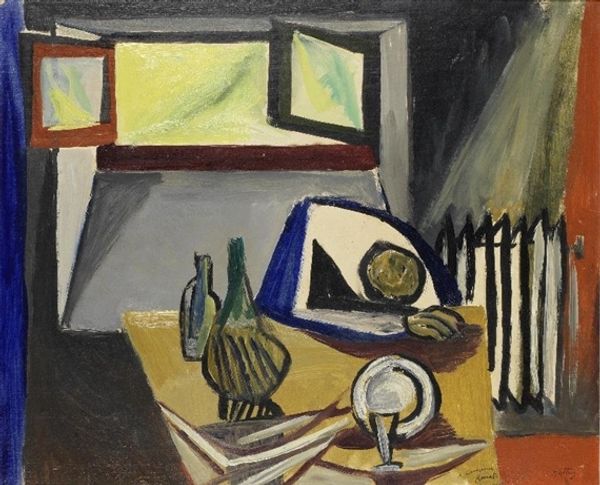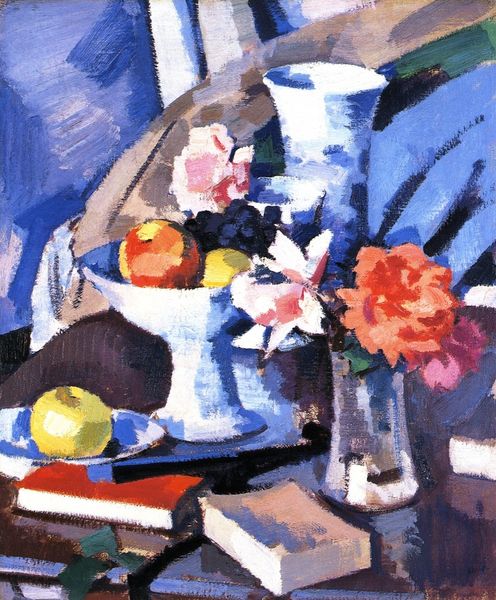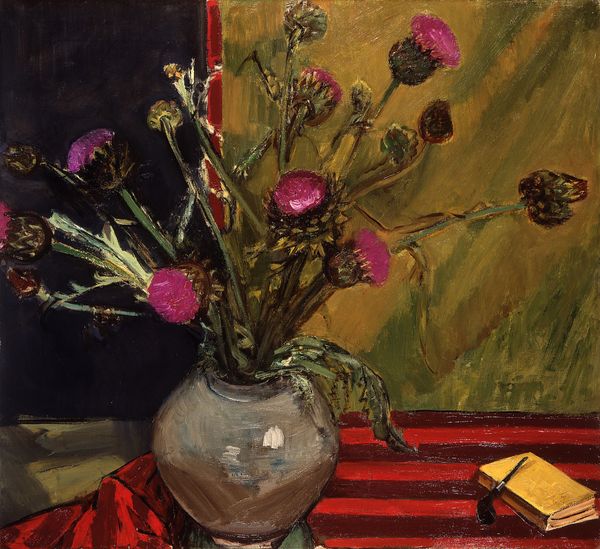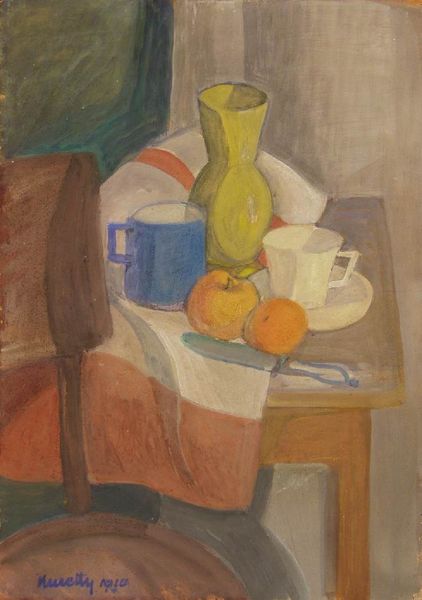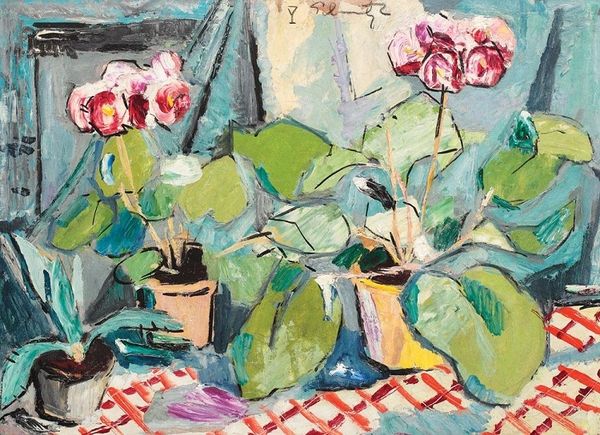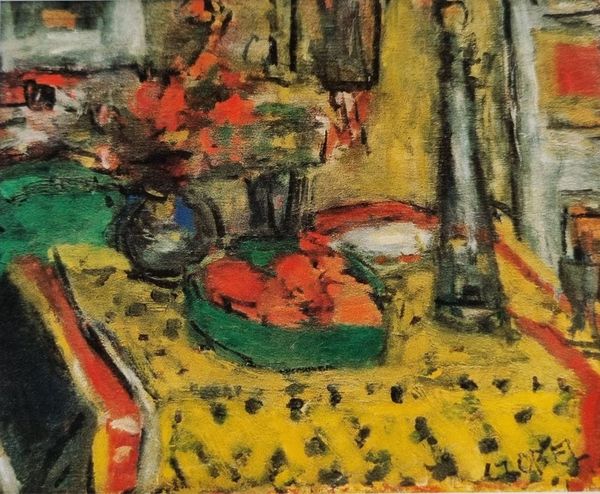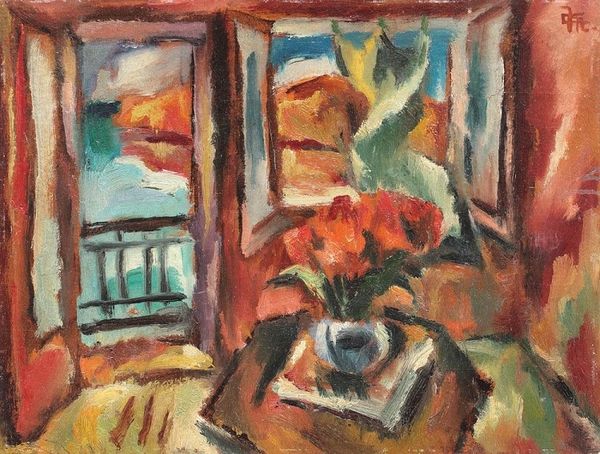
Copyright: Istvan Ilosvai Varga,Fair Use
Editor: This is "Flowerpots on the Windowsill," painted by Istvan Ilosvai Varga in 1931 using oil paint. There's something quite intimate about it, like peering into a personal, sunlit space. What catches your eye in this piece? Curator: What immediately strikes me is the tension between interiority and exteriority. The painting presents us with a framed view—literally, a window onto a landscape. Consider the year, 1931. What social and political anxieties might be lurking outside that window? How might this ‘intimism’ be a retreat, or a form of quiet resistance, given the historical context of rising fascism in Europe? Editor: That's interesting, I hadn't considered the historical context so directly. The still life seems very domestic, even mundane. Curator: Precisely! The apparent "mundanity" becomes quite potent when you consider the painting's potential public role. How might the choice to depict everyday objects challenge or subtly critique prevailing ideologies of the time? Are these objects and compositions loaded in symbolism? Editor: So you’re suggesting that even seemingly simple scenes can be deeply influenced by what’s happening in the world outside the frame? I guess the selection itself can be viewed as political! Curator: Exactly. The window, framing a stylized natural scene, reminds me of other contemporary artists dealing with the idealisation of landscape. Do we think he is using "nature" and still-life, here, to subtly reinforce the social norms or perhaps offering an implicit critique by suggesting a more humanized perspective? Editor: This gives me a completely new way to appreciate the piece! I never thought about the public function of a painting with common items on display. Curator: Seeing art as active participants in a broader social discourse opens up so many interpretive avenues. It encourages us to question not just what we see, but *why* we see it. Editor: Right, and that's crucial to understanding the choices that artists make. Thank you for your perspective. Curator: My pleasure. Remember, art doesn't exist in a vacuum, but is shaped by – and helps to shape – our understanding of the world around us.
Comments
No comments
Be the first to comment and join the conversation on the ultimate creative platform.
